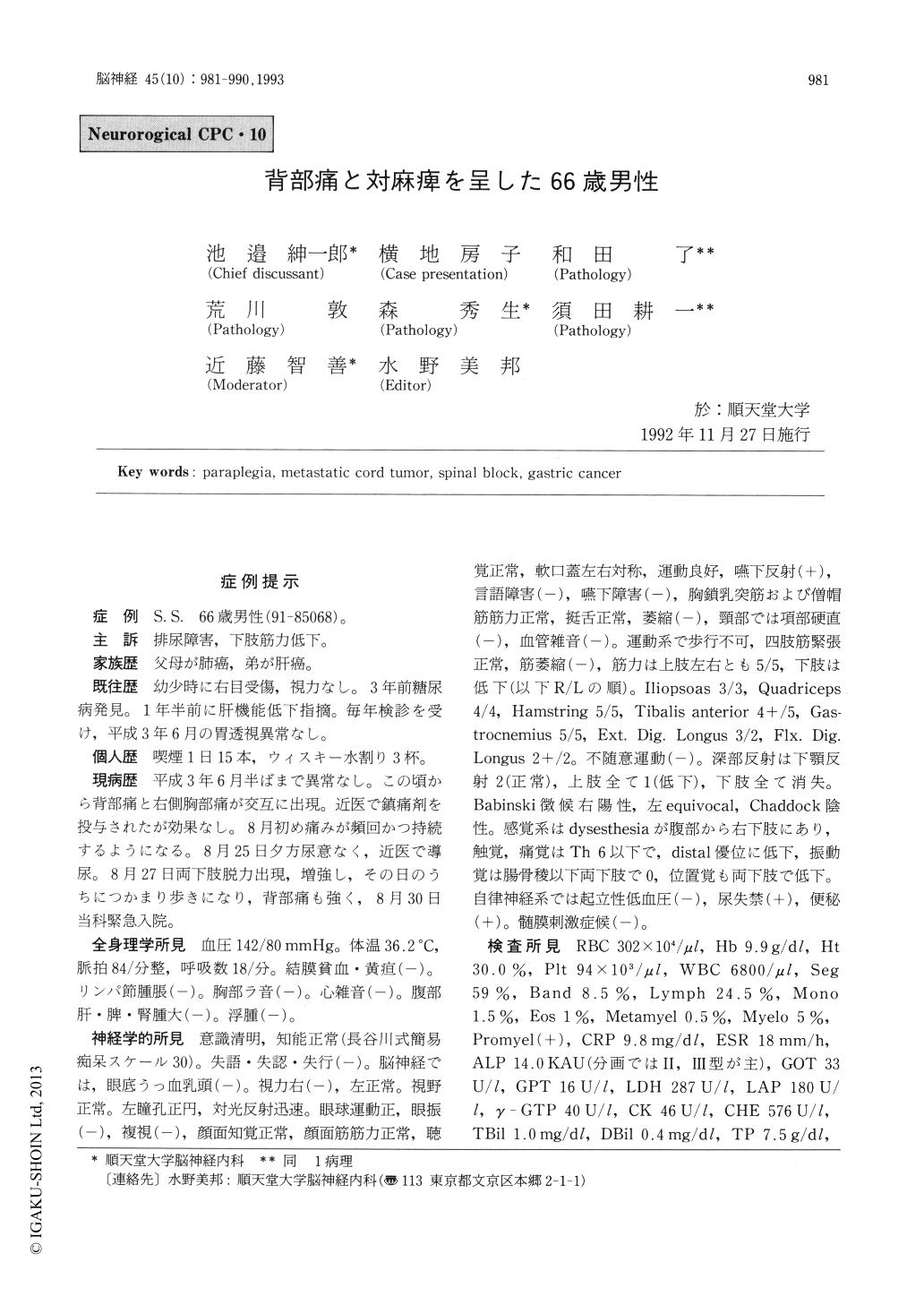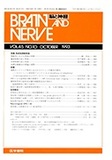Japanese
English
- 有料閲覧
- Abstract 文献概要
- 1ページ目 Look Inside
症例提示
症例 S.S.66歳男性(91-85068)。
主訴 排尿障害,下肢筋力低下。
We report a 66-year-old man with progressive spinal paraplegia. He was well until June of 1991 when he had an onset of backache and right chest pain. On August 25, he lost sensation to void and he became unable to urinate. On the same day, he noted weakness in his legs which became progres-sively worse, and he was admitted to our hospital. Past medical history included diabetes mellitus which was found 3 years previously. He had upper gastrointestinal series 2 months before, which revealed a normal study.
On admission, he was alert and general physical examination was unremarkable. Neurological examination revealed a mentally sound man with normal higher cerebral functions. Cranial nerves were also intact. He was unable to walk. No muscle atrophy was noted, but he had moderate to marked (2/5) weakness in both legs. No ataxia was noted in the upper extremities. Jaw jerk was nor-mal, however, deep reflexes in the upper extremities were decreased, and absent in the lower extremities. Babinski sign was present bilaterally. All sensory modalities were diminished below the Th 6 der-matom. No meningeal sign was present.
Emergency myelography was performed on the day of admission, which revealed complete block from the Th4 to Th8 segments. CSF taken at thattime was xanthochromic, positive Queckenstedt test containing 1,133 mg/dl of protein, 54 mg/dl of sugar and 1/3μl of lymphocyte. On August 31, laminectomy was performed from Th5 to Th7. The spinal bones in this area was very fragile and hemorrhagic. A soft yellowish vascular-rich tissue was surrounding the spinal cord in the epidural space. Despite surgery his weakness in legs wor-sened, and he became paraplegic by September 10th. He became somnolent with disorientation to time. In the subsequent course, he developed metabolic acidosis on September 26. On September 28, he became anuric and hypotensive. He expired later on that day.
He was discussed in a neurological CPC, and the chief discussant arrived at the conclusion that he had a gastric cancer with metastatic lesions in the thoracic spine.
Postmortem examination revealed a 3×2 cm tumor in the posterior wall of the stomach. His-tological examination revealed a highly cellular small cell carcinoma. These cells stained positively in Glimelius staining, indicating that these cells are of endocrine origin, a malignant carcinoid tumor. In addition, a small well differentiated adenocar-cinoma was found adjacent to the major carcinoid tumor. Small metastases were found in the liver and the lung. In the thoracic spine, laminectomy had been preformed. The dura underlying the lamine-ctomy was thickened, but no tumor cells were found. In the spinal cord, spongy change was found in each anterior column. Axonal swellings were found in those areas. These were thought to be a result of circulatory disturbance.
Endocrine tumor of the stomach is a rare malig-nant tumor. It is highly malignant, in that it will metastasize from the early stage of the disease, as seen in this patient. In spite of a small size of the tumor, metastases were found rather extensively.

Copyright © 1993, Igaku-Shoin Ltd. All rights reserved.


